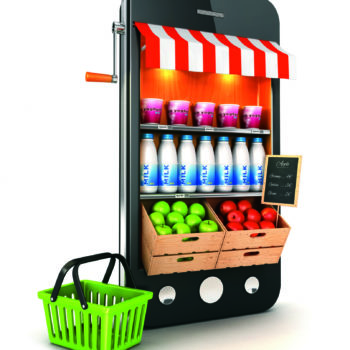Retail statistics understate rise of online

Dan White highlights how capturing the full extent of retail sales 'leaking' to overseas online retailers is a challenging task
21 April 2016
The value of Irish retail sales soared by 11% in February 2016 compared to the same month in 2015. Even when volatile motor sales are excluded the value of retail sales rose by 4.7%. But, with the CSO retail sales index excluding sales by overseas online retailers such as Amazon to Irish residents, how accurate a picture is painted by the official statistics?
So is the recession finally over for Irish retailers? Yes and no. While the value of Irish retail sales is now back to 2005 levels, retailers have only been able to achieve this feat by slashing their prices. The volume of non-motor retail sales is now at 115% of 2005 levels. This means that retailers have had to cut their prices by an average of almost 11% to keep customers coming through their doors.
The greatest price falls have been recorded in electrical goods, where average prices have more than halved since 2005. Other steep price falls have been recorded in furniture and lighting (down 41%), clothing and footwear (down 35%) and department stores (down 30%). Average food prices have been broadly unchanged over this period.
Not the full story
Unfortunately, the official data doesn’t tell us the full story. Over the past decade a swathe of retailing has moved online. When was the last time you entered a travel agent’s premises? Music retailing has largely disappeared into the ether and video rental and retailing firm Xtra-vision is unlikely to reappear following the appointment of a liquidator in January as downloads have largely destroyed its business model.
Even many of the retailers that have survived, up to now at least, find themselves under siege from the online giants. Books, clothes, gambling and electrical goods retailers must keep at least one eye on the online competition at all times.
Overseas online sales not included
So how much of Irish consumers’ retail spend is now going online? The answer is that we don’t know. When we contacted the CSO a very kind and patient statistician explained to us the retail sales index does not include sales made by overseas online retailers to Irish residents. While the online arms of Irish-based retailers do supply their sales data to the CSO, overseas-based online retailers don’t.
In fairness to the CSO, it is not unaware of this problem. However, capturing the full extent of retail sales “leaking” to overseas online retailers is extremely difficult. This is something I suspect that we are going to hear a lot more of in the months and years ahead.
Relying on surveys
Without CSO figures we are forced to rely on various surveys, the conclusions of which I suspect are sometimes scientifically plucked out of the air, conducted by a wide range of companies and organisations.
One of the more reliable of these was a recent report by market research company Euromonitor estimating that Irish internet sales grew by 15% to €2.8bn in 2015. Irish internet retailing remains fragmented with the biggest player Amazon having a 5% market share, the equivalent of annual sales to Irish residents of about €140m. Euromonitor is predicting compound annual growth in internet sales of 9% out to 2020, by which time it expects internet sales to have hit €4.3bn.
While some of this increase will undoubtedly be captured by the online operations of existing Irish-based retailers, expect Amazon to gobble up a large proportion of it as it establishes a dedicated Irish website at some stage over the next few years. Amazon is going to become an ever-larger fixture on the Irish retailing landscape.
The ‘Kodak trap’
Where does this leave the existing bricks and mortar retailers? Many of them are caught in what could be termed the ‘Kodak trap’ – the photographic film company that invented the digital camera in 1975 but which allowed its competitors to exploit the new technology rather than undermine the profitability of its legacy film and processing business before filing for bankruptcy in 2012.
Competing head-on with Amazon, which had sales of $107bn in 2015 and operating profits of $2.2bn, an operating margin of just over 2%, is no fun. Faced with such an unappealing prospect many existing retailers will no doubt be tempted to maximise the profits from their existing off-line operations in the short term and let the long term look after itself.
Not all equally vulnerable
Of course not all retailing sectors are equally vulnerable to the Amazons of this world. Grocery retailing is probably least at risk – it’s one thing if your book is delivered 48 hours late but try doing that with fish or fresh cream!
However, even those retailers who enjoy some degree of protection from the online giants can’t afford to ignore the march of technology. While pure online probably doesn’t make sense in grocery, with UK analysts estimating that each delivery was costing market leader Tesco £20, there is almost certainly scope for hybrids such as ‘click and collect’ where the customer orders his or her groceries online but collects them from the store.
It is by boxing clever and using online in an innovative manner that the existing retailers can best hope to successfully compete with the online giants.



 Print
Print




Fans 0
Followers